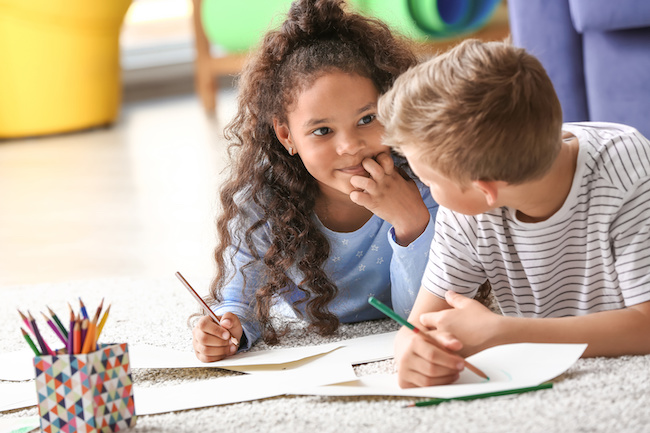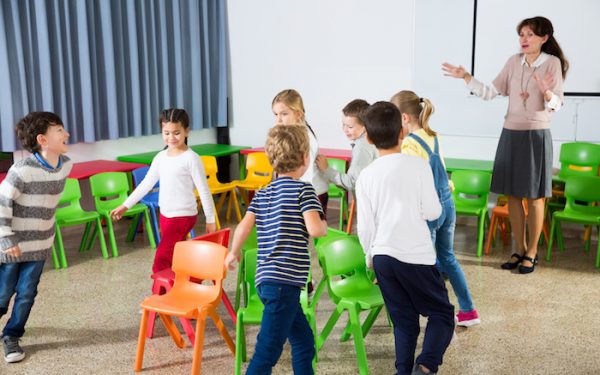Back-to-Back Drawing is a game that combines creativity, communication, and teamwork in a lighthearted challenge. Perfect for classrooms, parties, or family game nights, this activity encourages players to describe and interpret visual details, leading to plenty of laughter and surprises.
Game Overview
This game is versatile and easily adaptable to various settings and group sizes. Here’s what you need to know to set it up:
- Number of Players: From 4 participants (pairs work best).
- Ages: Suitable for kids aged 7 and up.
- Materials Needed:
- Sheets of paper for each participant.
- Drawing tools like pencils, pens, markers, or crayons.
- A collection of images or objects to describe (simple or complex).
- Optional: Blindfolds for an added challenge.
- Setting: Best played indoors.
- Duration: Approximately 20 minutes, depending on the number of rounds.
This game can be adjusted for different age groups and difficulty levels, making it an excellent choice for diverse occasions. Explore our guide on Cooperative Games for Teamwork, ideal for fostering collaboration and fun in parties, classrooms, or any group setting!
How to Play Back-to-Back Drawing
Turn your space into a hub of creativity and communication with these simple steps:
Setup:
- Pair Up: Divide the participants into pairs and have them sit back-to-back.
- Choose a Describer and a Drawer: One participant in each pair will describe the image, while the other will attempt to draw it.
Gameplay:
- Select an Image: The describer picks an image or object to describe without revealing its name.
- Describe the Image: Using clear and detailed descriptions, the describer explains the image’s shapes, positions, and features.
- Start Drawing: The drawer listens carefully and interprets the descriptions to create their drawing.
- Time Limit: Set a timer (e.g., 5-10 minutes) for each round.
- Reveal and Compare: After time is up, pairs compare the completed drawing with the original image to see how closely they match.
This interactive game fosters both communication and creativity while providing lots of laughs along the way.
Variations for More Fun
Enhance the game with these creative twists:
- Silent Drawing: The describer uses only gestures or non-verbal cues to communicate, making the challenge even more exciting.
- Theme Rounds: Introduce themes for each round, such as animals, holiday objects, or famous landmarks, to add variety.
- Rotation: Switch pairs after each round to encourage new teamwork dynamics and perspectives.
- Group Competition: Have judges select the drawing that best matches the description for a competitive twist.
- Sequential Story: Build a collaborative story where each pair adds a drawing based on the last segment of the narrative, creating a unique visual tale.
These variations ensure the game stays fresh and engaging, no matter how many times you play. Try Puzzle Relay, a thrilling team game that combines the excitement of a relay race with the challenge of assembling a puzzle. Perfect for all ages!
Educational Benefits of Back-to-Back Drawing
Beyond the fun, Back-to-Back Drawing offers several developmental advantages for kids:
- Communication Skills: Improves clarity and precision in verbal instructions.
- Active Listening: Encourages attentive listening and interpretation.
- Teamwork and Collaboration: Teaches participants to work together to achieve a common goal.
- Creativity: Stimulates imagination and artistic expression.
- Problem-Solving: Challenges players to find innovative ways to describe and draw.
- Patience and Focus: Requires concentration and persistence throughout the activity.
Back-to-Back Drawing is more than just a game—it’s an opportunity for kids to connect, communicate, and create in a fun and supportive environment. Whether it’s for a party, a classroom activity, or a casual get-together, this game guarantees memorable moments and plenty of smiles. Ready to draw up some fun?
Discover a world of fun with treasure hunts, investigative mysteries, and escape rooms tailored for kids 4-12 to spark adventure and joy!






